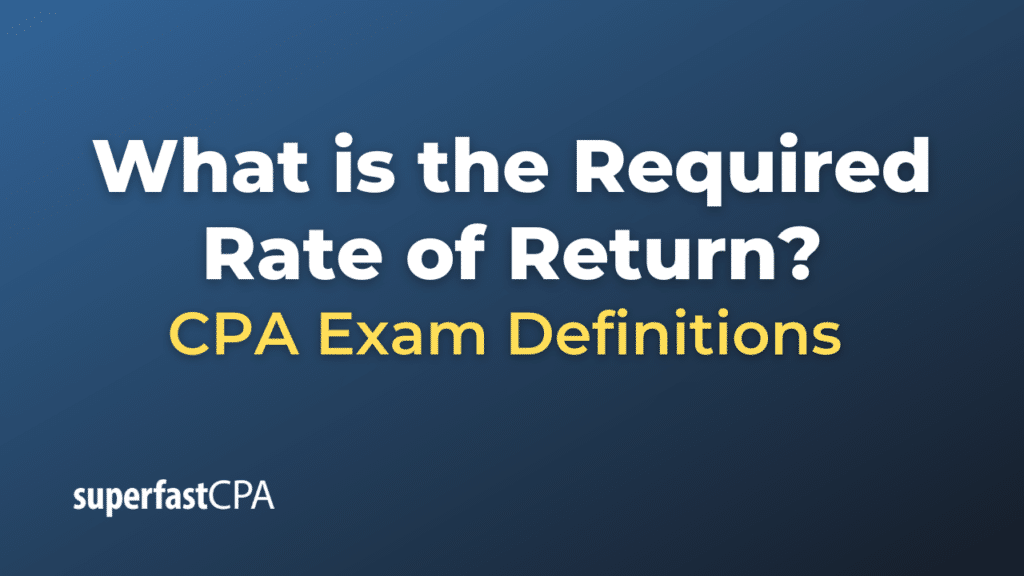Required Rate of Return
The Required Rate of Return (RRR) is the minimum return an investor expects to achieve by investing in a particular asset, given its risk profile. In other words, it’s the compensation the investor requires for the risk of investing their money. The RRR can be used to determine whether an investment is worth undertaking, and it serves as a benchmark for evaluating the potential profitability of investments.
The RRR can be influenced by several factors:
- Risk-Free Rate: This is the return on a risk-free investment, typically associated with government bonds like U.S. Treasuries. Any investment with risk should ideally offer a return higher than this rate.
- Market Rate of Return: This is the average return of the market or a broad market index.
- Beta (for stocks): Beta measures a stock’s volatility in relation to the overall market. A beta greater than 1 indicates that the stock is more volatile than the market, while a beta less than 1 indicates that the stock is less volatile.
- Individual Investment Risks: These include the specific risks associated with an individual investment or project, such as business risk, financial risk, and liquidity risk.
- Inflation: The expected rate of inflation can also influence the RRR as investors will want their investments to at least keep pace with inflation.
For stocks, the RRR can be calculated using the Capital Asset Pricing Model (CAPM):
RRR = Risk − FreeRate + Beta × (Market Rate of Return − Risk − Free Rate)
For projects or investments within a company, the RRR can be synonymous with the company’s cost of capital (especially its weighted average cost of capital or WACC), which includes the cost of debt and equity, and represents the return required to compensate all providers of capital.
Example of the Required Rate of Return
Let’s explore the Required Rate of Return (RRR) using the Capital Asset Pricing Model (CAPM) for a hypothetical stock.
Given:
- Risk-Free Rate (Rf): This is typically represented by the return on a long-term government bond. Let’s assume the risk-free rate is 2%.
- Market Rate of Return (Rm): This represents the average return of the market. Let’s assume the market return is 8%.
- Beta (β): This measures the stock’s volatility in comparison to the market. Let’s assume the stock has a beta of 1.5, meaning it’s 50% more volatile than the market.
Using the CAPM formula:
RRR = Rf + β × (Rm − Rf)
Calculation:
RRR=2
RRR=2
RRR=2
RRR=11
Interpretation:
Given the stock’s risk profile (as indicated by its beta of 1.5), an investor would require a minimum return of 11% to invest in it. If the investor believes the stock can achieve a return greater than or equal to 11%, they might consider it a worthwhile investment. Conversely, if the stock’s expected return is less than 11%, the investor might deem it unsuitable, given its risk.
It’s essential to understand that the required rate of return is a subjective measure. Different investors might have varying risk appetites, leading to different RRRs for the same asset. The CAPM provides a theoretical framework, but in real-world scenarios, other factors and personal preferences also come into play.













